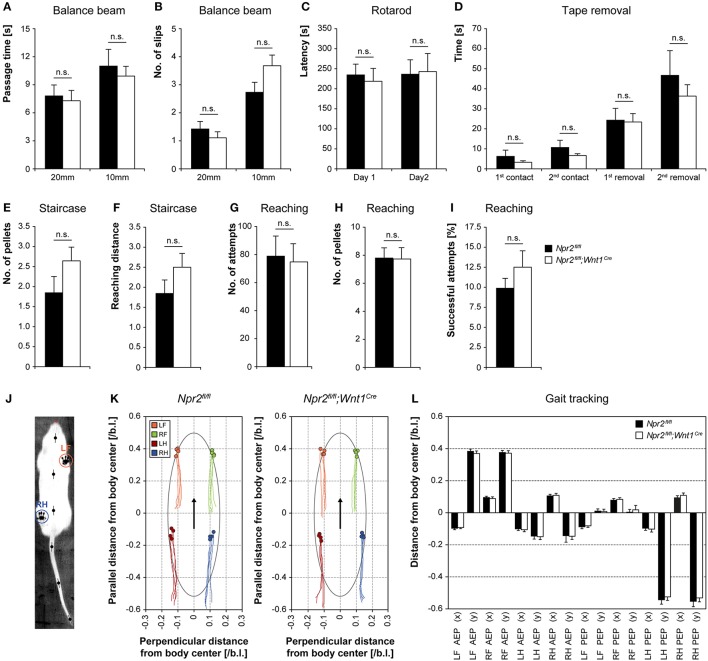Figure 3.
Analysis of balance and motor coordination in the absence of Npr2fl/fl;Wnt1Cre. Balance and motor coordination in Npr2-deficient mice was not altered in the absence of DRG axon bifurcation using the (A) beam walking test (n = 13 Npr2fl/fl and 14 Npr2fl/fl;Wnt1Cre), passage time and (B) number of slips, (C) rotarod performance test (n = 5), (D) tape removal test (n = 13 Npr2fl/fl and 14 Npr2fl/fl;Wnt1Cre), (E) staircase test, no. of pellets and (F) reaching distance (n = 13 Npr2fl/fl and 14 Npr2fl/fl;Wnt1Cre), (G) food grasping and reaching, number of attempts, (H) number of pellets and (I) successful attempts (n = 10 Npr2fl/fl and 15 Npr2fl/fl;Wnt1Cre), (J) walking track analysis using the MouseWalker, (K) Plots of stand traces of free walking animals and (L) summary of paw positioning in Npr2fl/fl (n = 4) and Npr2fl/fl;Wnt1Cre (n = 4) are shown. AEP, anterior extreme position; PEP, posterior extreme postion; L, left; R, right; F, forepaw; H, hind paw; error bar: SEM. No significant differences were observed between Npr2fl/fl and Npr2fl/fl;Wnt1Cre mice in any of these tests.

